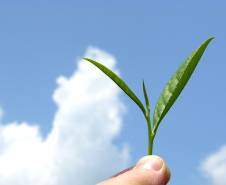Japan is extremely proud of its traditional drink, Japanese green tea. From generation to generation, it has been indispensable to their way of life. In this final episode, we explore the profound world of Japanese green tea.
 Green tea is ubiquitous in Japan and therefore is more commonly known
simply as "tea". It is even referred to as "Japanese tea" though it was first used in China during the Song
Dynasty, and brought to Japan by Myōan Eisai, a Japanese Buddhist priest who
also introduced the Rinzai school of Zen
Buddhism.
Green tea is ubiquitous in Japan and therefore is more commonly known
simply as "tea". It is even referred to as "Japanese tea" though it was first used in China during the Song
Dynasty, and brought to Japan by Myōan Eisai, a Japanese Buddhist priest who
also introduced the Rinzai school of Zen
Buddhism.
Types of tea are commonly graded depending on the quality and the parts of the plant used as well as how they are processed. There are large variations in both price and quality within these broad categories, and there are many specialty green teas that fall outside this spectrum. The best Japanese green tea is said to be that from the Yame region of Fukuoka Prefecture and the Uji region of Kyoto Shizuoka Prefecture produces 40% of raw tea leaf.
Green tea is made solely with the leaves of Camellia sinensis that have undergone minimal oxidation during processing. Green tea originates from China and has become associated with many cultures in Asia from Japan and South Korea to the Middle East. Many varieties of green tea have been created in countries where they are grown. These varieties can differ substantially due to variable growing conditions, horticulture, production processing, and harvesting time.
Over the last few decades green tea has been subjected to many scientific and medical studies to determine the extent of its long-purported health benefits, with some evidence suggesting that regular green tea drinkers have lower chances of heart disease and of developing certain types of cancer. Although green tea does not raise the metabolic rate enough to produce immediate weight loss, a green tea extract containing polyphenols and caffeine has been shown to induce thermogenesis and stimulate fat oxidation, boosting the metabolic rate 4% without increasing the heart rate.
According to a survey released by the United States Department of Agriculture in 2007, the mean content of flavonoids in a cup of green tea is higher than that in the same volume of other food and drink items that are traditionally considered of health contributing nature, including fresh fruits, vegetable juices or wine. Flavonoids are a group of phytochemicals in most plant products that are responsible for such health effects as anti-oxidative and anticarcinogenic functions. However, as a tea information site points out, the content varies dramatically amongst different tea products, basing on the same USDA survey.
Episodes:
 |
JAPANESE CUISINE: We introduce you to the well-balanced Japanese menu and meal style. |
 |
JAPANESE RICE: The pursuit of delicious rice to this day remains an ongoing national passion. |
 |
SEAFOOD: The Japanese are masters at unlocking the flavor of the ocean bounty. |
 |
VEGETABLES: Japan has a variety of unique vegetables. We take a look at some delicious & healthy Japanese vegetables. |
 |
FRUIT: With its clearly defined seasons and dedicated farmers, Japan is home to many varieties of sweet fruit. |
 |
GIFTS FROM THE FOREST: Japanese have accumulated knowledge of producing high quality mushrooms and charcoal. |
 |
JAPANESE BEEF: Discover the secrets of the great taste of Japan's Wagyu, now an internationally recognized brand of beef. |
Contact Us | Shop | Sitemap | Join Our Team | Investors | Advertise | Web Design Services
Community | Foodies' Choice | Meetup Groups | Chat | Blogs | Forums | Submit Your Site | Resources
